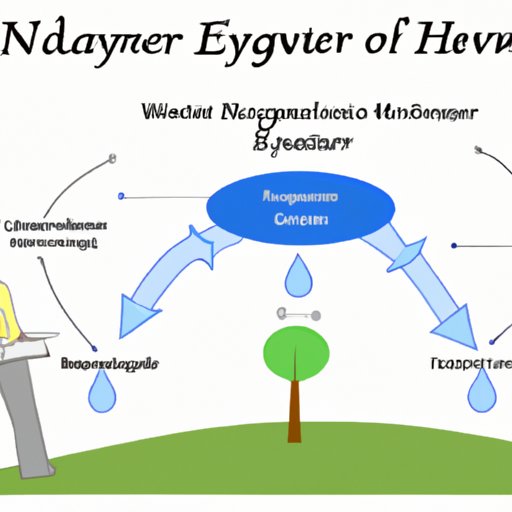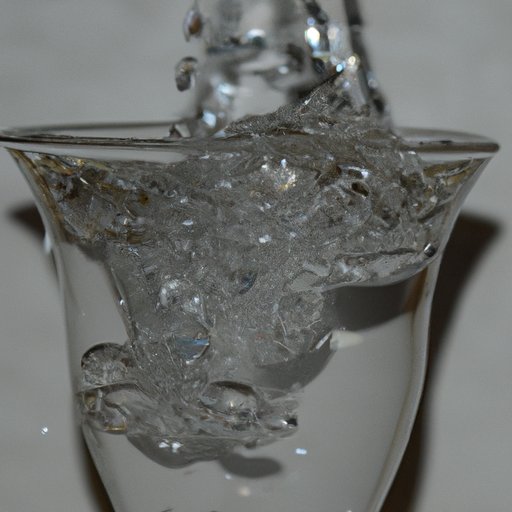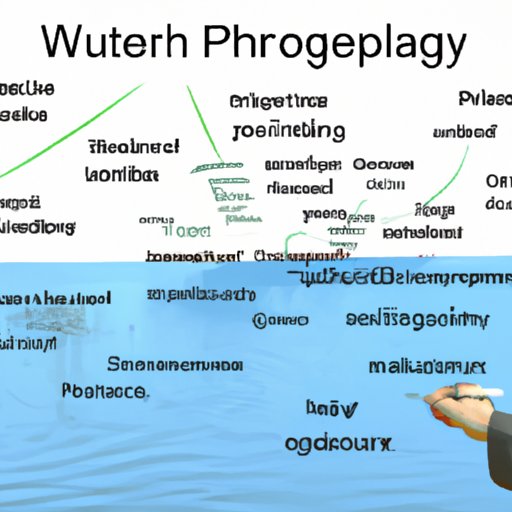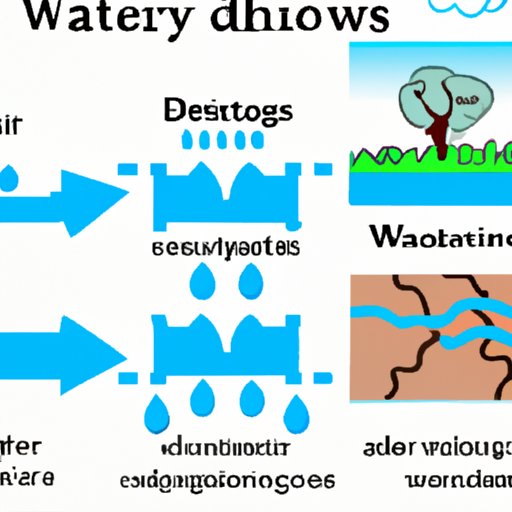Introduction
Water is a fundamental part of life on Earth. It covers more than 70 percent of the planet’s surface, making it an indispensable resource for all forms of life. The science of water is the study of this vital resource and its many forms, properties, and functions. In this article, we will explore the science of water and examine the hydrologic cycle, chemical properties, ecosystems, pollution, climate change, filtration systems, desalination, and reverse osmosis.

Examining the Hydrologic Cycle: Understanding What is the Science of Water
The hydrologic cycle is the continuous movement of water between the land, oceans, and atmosphere. It is a natural process that is essential to the water cycle and involves evaporation, condensation, precipitation, infiltration, and runoff. Evaporation is the process by which liquid water turns into vapor or gas. Condensation is the opposite process, in which vapor turns back into liquid water. Precipitation is the release of water in the form of rain, snow, sleet, or hail. Infiltration is the process by which water enters the soil and is stored in the ground. Runoff is the excess water that flows over the land surface into rivers, lakes, and oceans.
The hydrologic cycle is an important part of the science of water because it explains how water moves around the planet and how it is used by plants and animals. It is also important for understanding the relationship between water and climate. For example, warmer temperatures can cause more evaporation, leading to more precipitation and increased runoff. This can have both positive and negative effects on ecosystems, depending on the amount of precipitation and the type of vegetation.

Exploring the Different Forms of Water in the Cycle
Water exists in several different forms in the hydrologic cycle. Liquid water is the most common form and is found in oceans, lakes, rivers, and streams. Ice is another form of water and is found in glaciers and snowpacks. Water vapor is the gaseous form of water and is present in the atmosphere. Finally, groundwater is found beneath the surface of the earth and is an important source of drinking water for many communities.
Exploring the Chemical and Physical Properties of Water
Water has unique chemical and physical properties that make it essential for life on Earth. Water molecules are made up of two hydrogen atoms and one oxygen atom, giving it the chemical formula H2O. This arrangement allows water molecules to form strong hydrogen bonds, giving water a high boiling point and a low freezing point. Water is also an excellent solvent and can dissolve many substances, including salts, sugars, and other organic compounds.
Water is also affected by temperature and pressure. As temperature increases, the molecules move faster and take up more space. At higher temperatures, water molecules can even break apart into their component atoms. Pressure also affects the properties of water. As pressure increases, the molecules become more dense and take up less space.
Investigating the Role of Water in Various Ecosystems
Water plays an essential role in various ecosystems. Plants use water to carry nutrients to their cells and to help regulate their temperature. Animals rely on water for drinking, bathing, and keeping cool. Aquatic organisms like fish, amphibians, and crustaceans depend on water for survival.
In addition to providing sustenance for living organisms, water also helps to regulate the temperature of ecosystems. When water evaporates from surfaces, it carries heat away from the area, cooling the environment. This helps to maintain a comfortable temperature for plants and animals.

Analyzing the Impact of Human Activities on Water Resources
Human activities can have a major impact on water resources. Pollution is one of the biggest threats to water quality. Pollutants such as sewage, industrial chemicals, and agricultural runoff can contaminate water supplies and make them unsafe for drinking and swimming. Climate change is another major threat to water resources. Rising temperatures can lead to increased evaporation, leading to more extreme weather events, such as droughts and floods.
Overuse of water resources can also have a major impact. Withdrawing too much water from rivers and lakes can reduce the amount of water available for drinking and irrigation. Over-irrigation of crops can cause salinization of the soil, reducing crop yields and damaging ecosystems.
Investigating the Technology Used to Purify and Conserve Water
There are several technologies available to purify and conserve water resources. Filtration systems are used to remove impurities from water, making it safe for drinking and other uses. Desalination is a process used to remove salt from seawater, making it suitable for drinking and irrigation. Reverse osmosis is another technology used to filter out particles from water, making it suitable for drinking and other uses.
Conservation is another important part of managing water resources. Using water more efficiently can help reduce water waste and ensure that there is enough water to meet the needs of people, plants, and animals. Simple steps such as collecting rainwater, fixing leaking pipes, and using native plants in landscaping can help conserve water.
Conclusion
The science of water is an expansive field of study, encompassing everything from the hydrologic cycle to the chemical properties, ecosystems, pollution, climate change, filtration systems, desalination, and reverse osmosis. It is an essential part of life on Earth and understanding the science of water is crucial for preserving our water resources for future generations. To do this, we must continue to research and develop new technologies for purifying and conserving water, as well as strive to reduce our impact on the environment.
By examining the science of water, we can gain a better understanding of this vital resource and its importance to life on Earth. We can learn how to protect our water resources and ensure that they are available for generations to come.
(Note: Is this article not meeting your expectations? Do you have knowledge or insights to share? Unlock new opportunities and expand your reach by joining our authors team. Click Registration to join us and share your expertise with our readers.)
